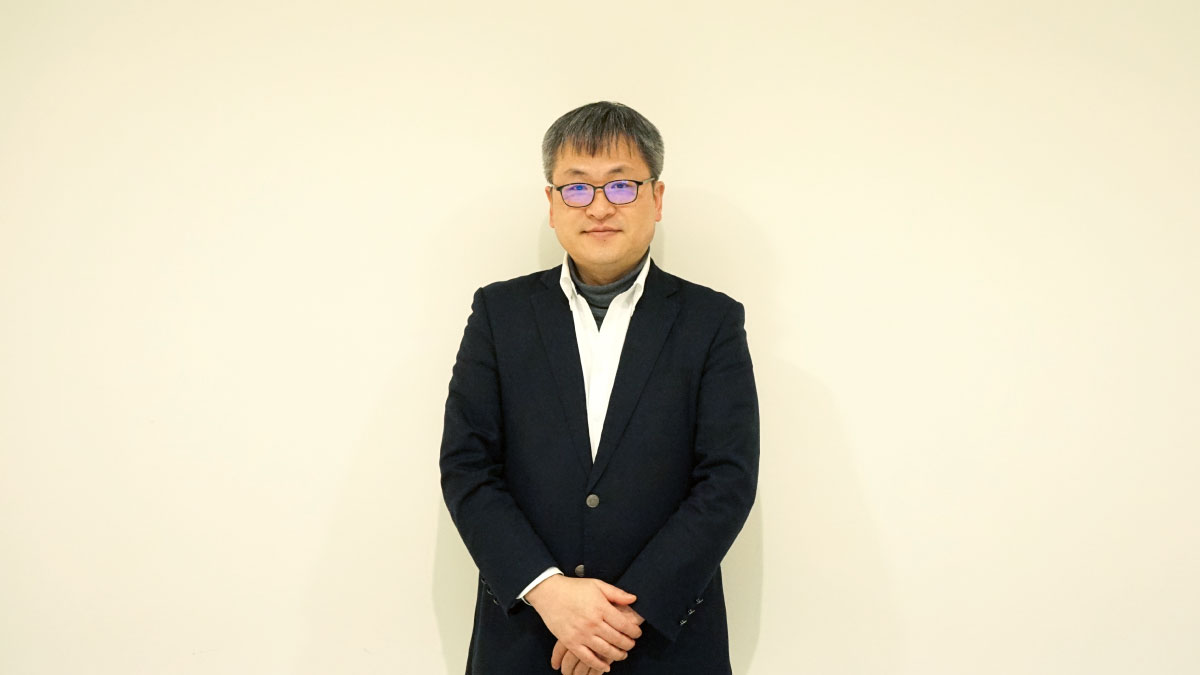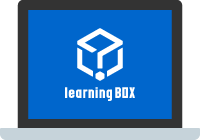Develop human resources who can act in the event of an actual disaster by utilizing their knowledge of systematic disaster countermeasures.
Released on
Released on
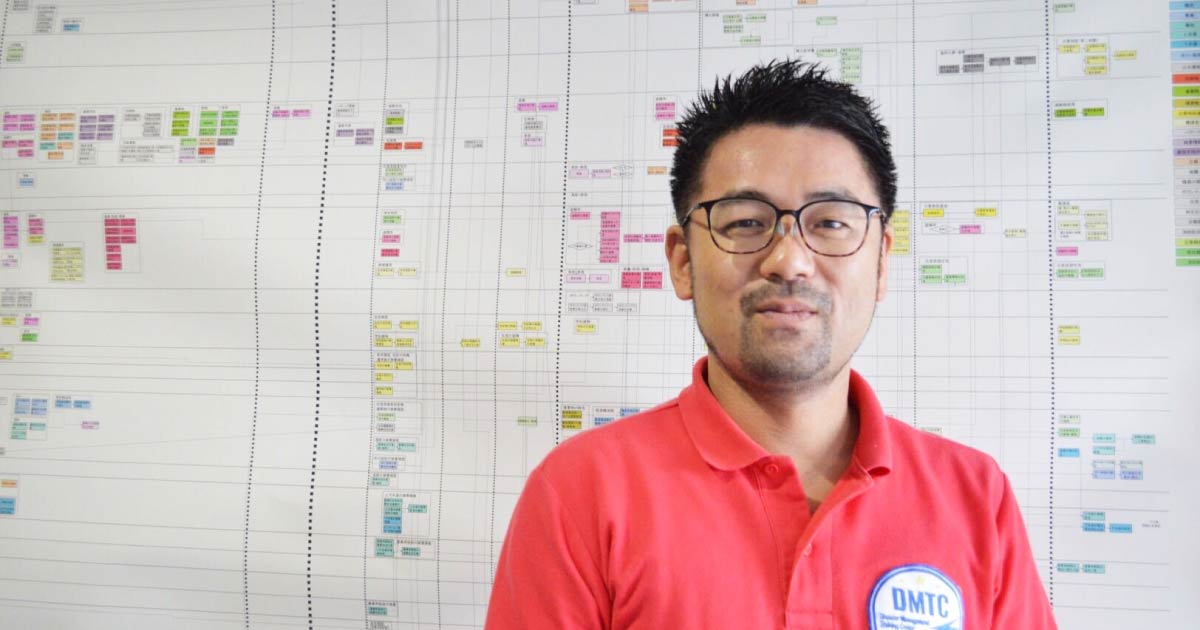
Mr. Sozumi Numata

- The current disaster preparedness training was too short and how-to oriented, making it difficult to deepen thinking and understanding.
- Responders to disasters can change from time to time and often cannot respond immediately
- Travel time and distance were major hurdles to attending training in Tokyo from distant locations
- Because we thought that e-learning was an effective way to input knowledge followed by hands-on learning.


- Establishing a step-by-step online training system from "basic" to "advanced" by utilizing learningBOX
- Combination of video + reports + questionnaires to enable spontaneous deepening of learning
- Smooth e-learning deployment to training sites nationwide, including the Ministry of Internal Affairs and Communications (MIC) and Tokushima Prefecture's General Assistance for Disaster Management (GADM) training.
The "University of Tokyo Disaster Preparedness Training Center" provides practical and systematic training specifically for disaster response in order to protect lives from disasters and maintain the functioning of society. Targeting government agencies, private companies, and local residents, the center visualizes the overall picture of disaster response based on 47 categories of work and fosters action-oriented human resources. As part of this effort, we introduced the e-learning system "learningBOX" as a mechanism to provide continuous learning opportunities. In this interview, we asked them about their approach to disaster countermeasure education and the creation of a new learning model through the use of e-learning.
The University of Tokyo's Disaster Preparedness Training Center fosters "people who can act in times of disaster.
First of all, please tell us about what you are working on in your laboratory, Dr. Numata.
Our laboratory conducts systematic research on disaster preparedness across a wide range of disciplines, from engineering to social sciences. We have developed training programs based on our findings and apply them to actual training.
The purpose of this program is to provide learning about disaster preparedness for a variety of target audiences, including local governments, private companies, and local residents. I originally came from a civil engineering background, and now I conduct research in a wide range of fields related to disaster preparedness, from those related to civil engineering structures such as various infrastructures and lifelines, to evacuation centers, the medical field, the welfare field, and the information field.
What are some of the tasks involved in disaster preparedness?
The first step is to define the tasks required in the event of a disaster as a framework (operational categories) of 47 types. For each of the 47 major categories, detailed job descriptions are provided. For example, "shelter management," "waste disposal," "road restoration," "building survey," and so on.
If it is "shelter management," it is subdivided into about 10 tasks. The 47 types are the base, and while pursuing the ideal form of the flowchart for the base itself, we are also conducting research on various themes, such as improving the efficiency of each of the subdivided tasks.
At the Disaster Preparedness Training Center, you will first study these 47 types of work as a whole to understand the big picture, and from there, you will learn what is important and what is necessary for each individual detailed work.
Actually, the Disaster Preparedness Training Center is operated with companies in their respective fields of expertise.

The system for operating these mechanisms is the "BOSS" (Business Operation and Strategy System), isn't it?
The Business Operation Support System (BOSS), a disaster response process management system that creates segmented flow charts based on 47 different frameworks, was developed by us and is currently being implemented in about 60 municipalities. We will have them actually use "BOSS" and when a disaster occurs, we will give them specific instructions while keeping an eye on the overall picture.
Can you tell us what led to the establishment of the Disaster Response Training Center?
I originally studied all kinds of disaster countermeasures in my laboratory. In a typical job, if you do the same job over and over again, you learn the day-to-day operations. However, even if the same thing happens in a disaster, the personnel who respond to the disaster change rapidly, and in many cases, the majority of responders are experiencing the disaster for the first time. In many cases, this makes it difficult to respond to a disaster because the overall picture of the work is not clear, and people do not know what exactly they are supposed to do.
Therefore, we decided to first create a flow that would give an overall picture, and we have now systematized the system as "BOSS" and are introducing it to local governments in various regions. However, just having a system is not enough to respond when a real disaster occurs, so training and education must be in place. So I started to investigate what training and education is like in Japan today.
Please elaborate on the details of that survey.
Training in Japan tends to be short and how-to oriented. The Cabinet Office, Ministry of Internal Affairs and Communications, and Ministry of Land, Infrastructure, Transport and Tourism also offer training, but the format is crammed into a limited amount of time, so there is no time to think carefully, and I felt that it is difficult for knowledge to take root.
In contrast, overseas disaster response training, especially in the U.S., was well organized. In the U.S., e-learning is advanced, and programs are in place for learning over a period of one to two months, and video materials are very well-developed.
From there, we wondered if we could create an educational system that would allow working people to continue learning anew and properly, and decided to create this Disaster Response Training Center ourselves.
It was a big decision.
At first, we considered the idea of participating in a national training program, but we realized that it would require a great deal of coordination and specialized human resources to make it happen, and we felt that it would be difficult in reality. If this was the case, we decided to create the program at our university. There were various backgrounds, and it was also meant to supplement the areas where the national government could not expand. We decided to set up the Disaster Response Training Center to educate people.
Introducing e-Learning Inspired by Overseas Disaster Prevention Education
Can you tell us about your motivation for introducing e-learning?
About two years ago, we conducted several training sessions using an abandoned school in Minami-Izu Town, Shizuoka Prefecture, to enrich the experience, including piling debris, handling it, and running an actual evacuation center in the gymnasium. Actual hands-on experience using one's body is possible as long as one has instructions, but what is more important is the ability to think with the input of basic knowledge. On the other hand, if the knowledge input is well-developed, it can be very effective in terms of actually doing and using what you think about, with just a little bit of hands-on experience included as an added bonus.
However, since we need to learn all 47 types of input, we would not have enough time if we gathered for training in one or two days, listened to the instructor, and then finished. When I thought about how to create a system to teach the basics and applications step by step, and how to set up a system to teach them in order, I thought that e-learning, like that used in training in the U.S., would be the best solution. It would be inefficient to have people from all over Japan travel all the way to Tokyo, listen to a classroom lecture, and then return home, including the travel time. That's when we came up with learningBOX.
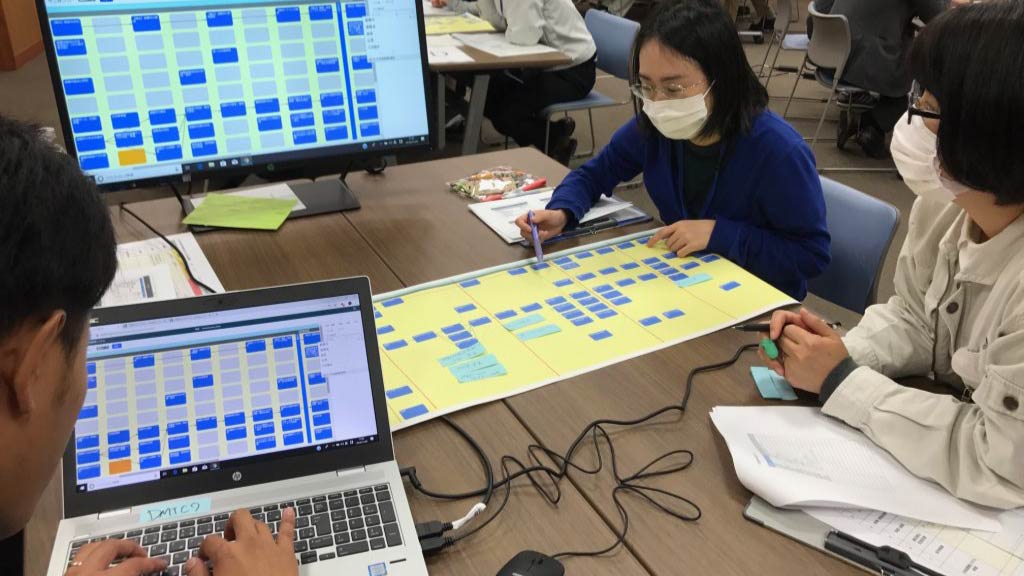
Thank you. I would like to know more about the overseas training programs you mentioned earlier, were any of them particularly impressive?
FEMA (Emergency Management Agency) in the United States. The government has formed a consortium with universities and organizations to design educational programs in order to be responsible for training throughout the United States. The educational programs are very comprehensive and have been created with a lot of money and time. In order to spread all training throughout the U.S., seven universities and other institutions are members of the consortium, and the government assigns responsibilities to the universities and organizations.
For example, the University of Hawaii has an area of expertise in earthquakes and tsunamis, and the University of Texas has an area of expertise in fire and firefighting, and they offer training for programs throughout the United States.
In Asia, Indonesia is a good example. The National Disaster Management Agency has established a training center with accommodations, and President Joko has even declared his intention to create the world's best disaster management training center. This is a national-level concept that even includes the acceptance of people from overseas.
What are some of the challenges of disaster preparedness training in Japan?
In Japan, each organization conducts various training programs on its own, but there is no coordination as an educational program among the various organizations and associations.
The reason why both the U.S. and Indonesia are able to set up such training plans is because they have a well-structured basic model for disaster preparedness.
I believe that disaster response is like the "kata" in karate. Because there is a basic kata, even if an unexpected disaster occurs, it can be applied in a way that updates the basic kata. However, this basic kata does not exist in Japan.
There are 170,000 to 180,000 evacuation centers throughout Japan, but there is no common information tool among them, and each municipality has different management methods. If there is a common national system, and if that system is used throughout the country, all municipalities can use the same tools to gather information.
In Japan, support personnel arrive from all over the country in the event of a disaster, but the equipment they bring and their ideas on how to respond vary, and in some cases there is confusion because of a lack of understanding between them and the receiving party.
We would like to conduct disaster response more efficiently by incorporating past disaster experiences into a "pattern" and sharing that know-how with everyone. By incorporating training content based on a common "pattern" into information sharing tools and applications, we will be able to respond with the same standards everywhere.
In the future, we would like to promote international standardization by switching languages.
LearningBOX is now being used for GADM training by the Ministry of Internal Affairs and Communications and Tokushima Prefecture
How did you find learningBOX?
There are so many companies that deal with e-learning if you look for them. I honestly felt that there were so many different types that I didn't really know what to expect. While I was still confused, a person in charge of your company came to our laboratory to explain to us.
When we discussed what we wanted to achieve using e-learning on the spot, they responded to all of our requests. And they responded immediately. I really appreciated that. The other major point was the functional aspect. The ability to set up the system so that teaching materials and videos cannot be downloaded was also important to us.
Have you considered other e-learning systems?
Yes, I thought leraningBOX was the way to go once you came to explain it to me, but some other parties asked, "Wouldn't another system be better?" However, other people involved in the project said that other systems might be better. However, I did not think at the time that there was such a big difference between other systems and learningBOX in terms of functionality.
The human aspect was still the biggest factor. The flexibility to respond immediately to requests and the responsiveness of support are probably the best. Of course, it is easy to use and has good features.
This is really easy to use, as I felt while actually creating content.
How are you actually using learningBOX?
Now we are using it for the Ministry of Internal Affairs and Communications (MIC) and Tokushima Prefecture's General Assistance for Disaster Management (GADM) training. In the Ministry of Internal Affairs and Communications (MIC) GADM training, you first log in and click on "Select Course," and you will see a special folder. In that folder, you will find the course materials, and at the beginning, there is a guidance page. There, you will find a thank you for attending this course and an overview (objectives and what we want you to learn, course flow, etc.).
Next, we ask them to complete a questionnaire to reaffirm the significance of attending this training. We ask them to write down their vision of how they would like to support the residents, and then we ask them to watch the video after they have organized their minds.
After the video, you will be asked to work on a report assignment that summarizes what you learned in the video. The entire video is about 50 minutes long and includes a set of reference videos that can be checked at your discretion.
Would the training in Tokushima Prefecture have the same structure?
The GADM training in Tokushima Prefecture is structured a little differently: participants watch five videos and are asked to answer questionnaire-style questions in each one, such as filling in key points for 47 different disaster response tasks while simulating them themselves.
Currently, the Disaster Preparedness Training Center offers a step-by-step course of study: basic, beginner, intermediate, and advanced. At this time, we have separate folders for each of the 20 teachers, and the training program is mainly based on videos.
The advanced content of the program is designed to train people in positions of decision-making authority in a company as leaders in disaster management. We hope to begin the basic course by the summer.
We would like to start with a basic course first, and then incorporate disaster prevention training as part of the training for young corporate employees.
The earningBOX paid option ".eCommerceWe are planning to sell a set of five online courses on basic disaster preparedness training + BCP (Business Continuity Plan) using the "Disaster Preparedness Training Basic Course + BCP (Business Continuity Plan)".
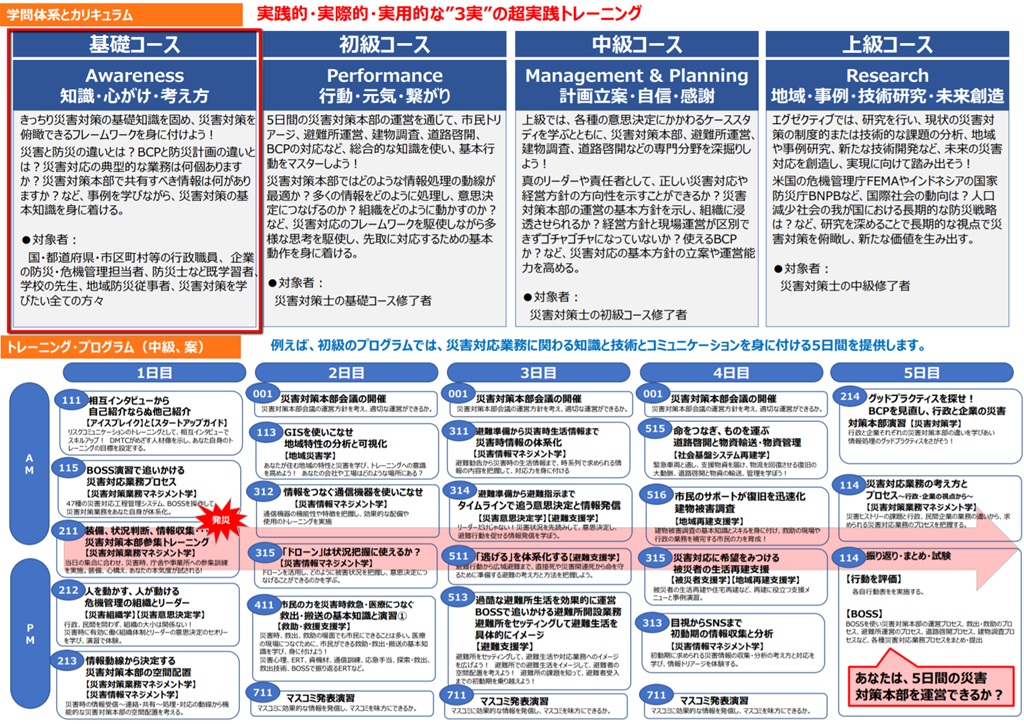
Thank you very much. Finally, what do you expect from learningBOX in the future?
I'm happy enough with the current situation. If I may say so, I have created many video materials and uploaded them in separate files for each theme, and it would be nice to have a function that automatically displays related materials in recommended combinations when you search for a word of interest. Also, if we could support an English version, I think it would make the site more widely available.
Thank you for your participation
.




